Understanding Sedum: A Versatile Succulent
Welcome to the world of Sedum, a fascinating genus of succulent plants that marries hardiness with charm. Let’s dive into the lush life of Sedum and uncover why this succulent is a fan favorite among gardeners and plant lovers alike. Whether you’re a seasoned green thumb or a budding plant parent, Sedum offers a canvas of possibilities for any setting.
Sedums—also known as stonecrops—bring a delightful mix of species to the table, each with its own unique temperament and visual appeal. From the ground-hugging Sedum acre to the tall, proud Sedum spectabile, there’s a species for every corner of your garden or indoor space. And let’s not forget their tenacity! With these versatile succulents, you’re not just decorating your space—you’re also investing in plants that are rigged for resilience.
Imagine this: you’re perusing your garden on a lazy afternoon, and there it is, a patch of Sedum ‘Autumn Joy’ lifting the spirits with its robust, broccoli-like blooms. Or perhaps you’re sipping your morning coffee, admiring the dainty Sedum morganianum, also known as the “Burro’s Tail,” cascading gracefully from a hanging planter. It’s scenes like these that showcase the adaptive range of this succulent champ, whether in full sun seducing the bees or nestling in the dappled shade offering a cool respite.
The secret behind Sedum’s adaptability lies in its general characteristics: plump, water-storing leaves, a stout stem system, and the innate ability to thrive with minimal fuss. These traits make Sedum a prime candidate for any garden or home seeking a hassle-free touch of nature.
Intrigued by the care that keeps these succulents thriving? Here’s a comprehensive guide to maintaining and reveling in the beauty of indoor succulents. From watering wisdom to picking the perfect spot, it’s a treasure trove of tips for the enthusiastic gardener.
Now, let’s get a closer look at these resilient wonders! Watch this insightful video and find out how you can get the most out of your Sedum plants with the right cleaning and stem cutting techniques.
Embracing Sedum in your life opens up a whole new chapter of botanical adventure. Whether basking in the sun’s embrace or tucked away in a cozy shaded nook, these succulents prove that versatility and beauty can indeed coexist. So, why not let Sedum transform your space into a sanctuary of greenery?
Sedum’s Sunlight Preferences: Myth vs. Reality
A wander through any gardener’s online forum might lead you to believe that sedum plants have a Goldilocks complex when it comes to their sunlight preferences. The debate swirls: do these succulent beauties bask in the glory of full sun, or do they shy away, preferring the cool embrace of the shade? Let’s shine a light on the reality of sedum’s solar cravings.
The myth that has long pervaded gardening circles suggests sedums are shade-seekers, and seems to stem from their hardy nature. This resilience is often misinterpreted as a signal that they can thrive without much light. However, a closer look at their natural habitats reveals that sedums are not just sun-worshippers; they are sun connoisseurs.
In the wild, sedum plants often grace the rocky outcrops and arid landscapes, where sunlight plays an unforgiving, yet vital, role in their growth. Picture the rugged slopes of a mountain or the fissures of a parched plain, where these plants collect and store sunlight much like a solar panel, engorging their leaves with life-sustaining energy. It’s an adaptation not borne out of mere preference but of necessity.
So, what of the gardeners who swear by their shade-grown sedum success stories? Herein lies the adaptability of this remarkable plant genus. While sedums revel in the sun’s gaze, they possess an uncanny ability to tolerate lower light conditions. Yes, they might not achieve their full splendor, but these plants will strive to survive. That said, lackluster growth and diminished flowering are often the trade-offs for such shade-borne compromise.
To put it in perspective, imagine hosting a dinner party without your star ingredient; the result might still be palatable, but it lacks the zest that makes it memorable. In the same vein, a sedum without adequate sunlight might live, but it doesn’t truly thrive. A well-lit sedum is like a well-loved painting — awash with vivid colors, full-bodied textures, and an undeniable vibrancy that catches every onlooker’s eye.
Indulge your sedums in sunbathing, and you’ll witness a transformation. The leaves thicken, the stems fortify, and the flowering becomes an event heralded by bursts of brilliant blooms that can withstand the perils of pests and weather—real-life evidence of the power of the sun.
Take Tommy’s garden, nestled in the sunny side streets of Tucson, Arizona, as a prime example. With a south-facing aspect, his sedum collection becomes the crowning jewel of the neighborhood each year, resplendent in full, sun-induced vitality. Contrast that with Tanya’s terrace in Toledo, shaded and serene, where her sedums strive with muted success, their subdued hues a testament to their struggle for light.
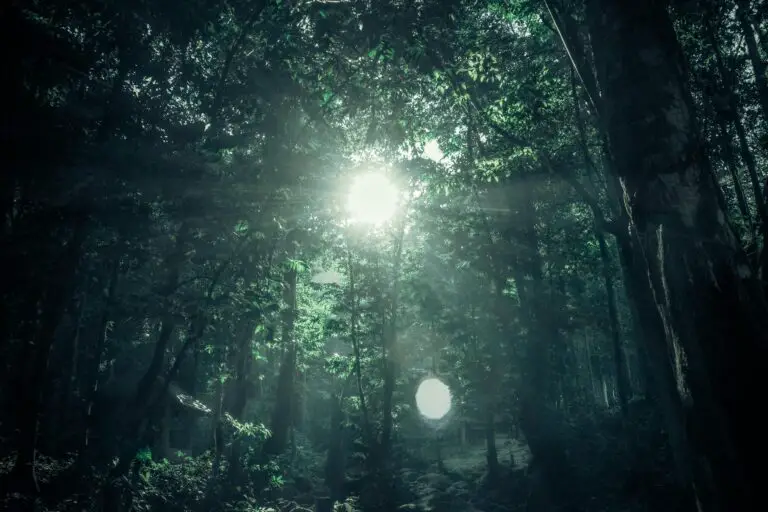
In conclusion, dismissing the myth, we uncover the truth: sedums are sunlight aficionados at heart. They might extend you some grace under the dimmer skies, but give them a sun-drenched spot in your garden and watch as they dazzle with delight. It’s not a matter of survival, but one of spectacular success. So, let’s lay the myth to rest and let the sun’s rays reveal the full glory of your sedum garden.
“`html
Sun-Worshipping Sedum: How Much Light Is Ideal?
For those with a penchant for gardening, the sedum beckons with its luscious leaves and bountiful blossoms. More often than not, you’ll find these succulent comrades basking in the glory of the golden sun. But how much sunlight does this sun-kissed perennial actually need to thrive? Let’s delve into the matter and shine some light on the subject.
As any seasoned green thumb will attest, sunlight is the lifeblood of most plants, and sedum is no exception. The ideal scenario paints a picture of these resilient beauties soaking up rays like there’s no tomorrow. In fact, these plants are tailor-made for the kind of sun-drenched environments that would have weaker vegetation wilting. Think Mediterranean marvels or the sun-soaked hills of the Californian coast.
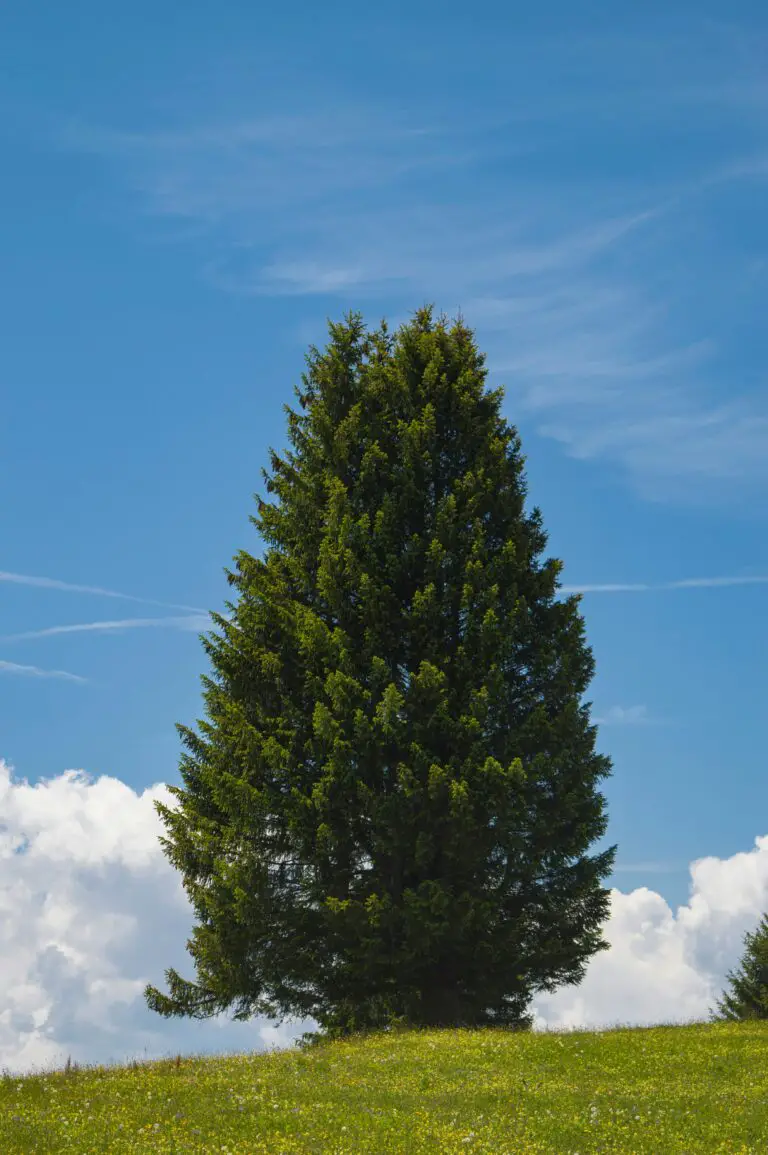
Imagine sedum as natural sunbathers, lounging for hours in full view of the sun’s gaze. The key to their vibrant existence is a generous helping of direct sunlight—about six hours a day—to ensure they’re truly flourishing. Fewer hours might not spell doom, but it’s the full sun that gets these hardy plants in their prime, bursting forth with colors that turn heads and warm hearts.
So, should your sedum’s leaves start to stretch out, becoming leggy in a desperate grasp for the sky, it’s a signal—they yearn for more of that celestial fire. Conversely, leaves that take on a crimson blush, which might be mistaken for a sign of distress, are often just sedum showing off their sun-kissed vitality. There’s a delicate balance to strike, for while these plants adore the limelight, extreme conditions can still push them to the brink. This guide on sunlight requirements for sedum provides a comprehensive overview of keeping your sedums in the sweet spot.
Let’s not forget that within the vast family of sedum, there are those who can handle shade better than their sun-loving siblings. These varieties, though fewer, can be the perfect fit for spaces where the sun’s rays are guests rather than permanent residents. Always consider the specific needs of your sedum species to ensure they get just the right amount of sunbathing time.
“`
The Shadier Side of Sedum: Thriving in Lower Light
Think of sedum, and your mind might paint a sun-drenched canvas, with these robust succulents basking in the glow. But what about the less sung heroes of the sedum world—the ones that don’t demand the limelight and are content in cozier, dimmer nooks of your garden? It’s time to lift the veil on the shade-loving side of sedum.
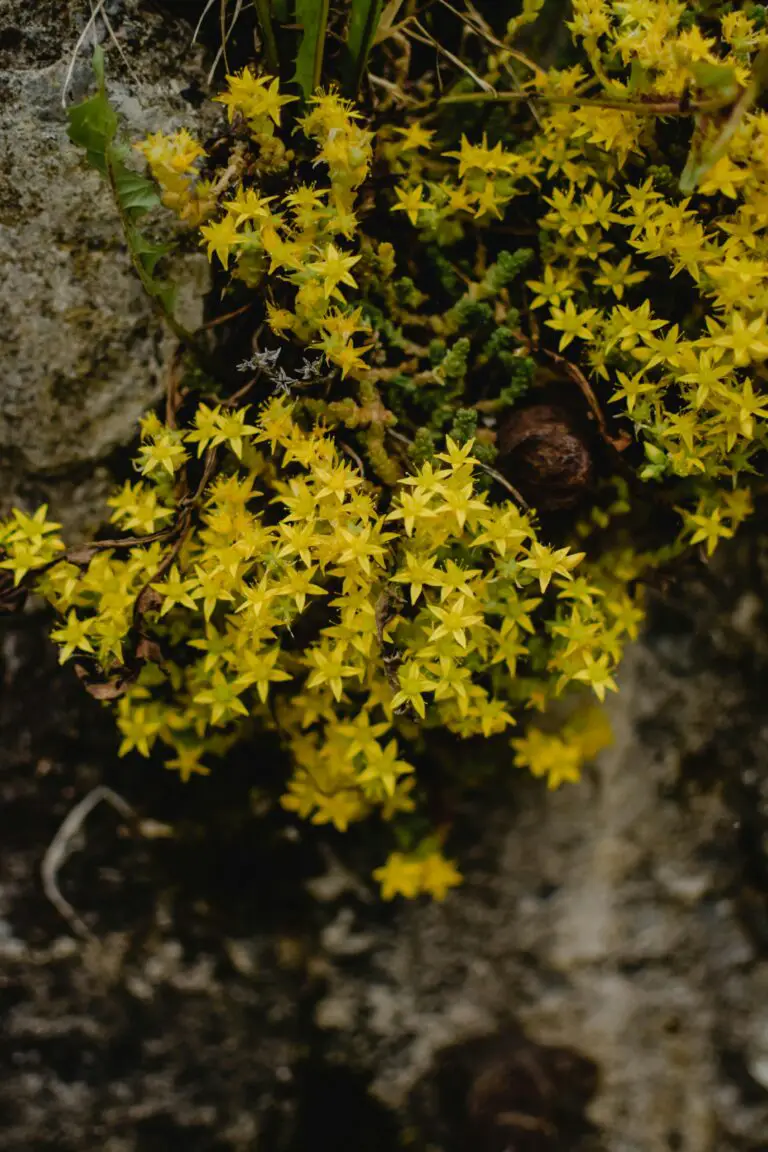
Let’s consider the charming Goldmoss Stonecrop, a verdant gem that finds solace in the shadows. Nestled understory, beneath the canopy of larger plants, it spreads like a lush carpet, crafting a serene and verdant landscape away from the harsh midday sun. Picture it under a leafy tree or alongside a north-facing wall; this variety exemplifies the beauty of sedum in diffused light.
In such shaded retreats, sedum care pivots on balance—too little light, and they may stretch languidly towards any whisper of sunshine, too much, and they can falter under the intensity. It’s about finding that sweet spot, where dappled light dances on their succulent leaves, and you mirror nature’s pure rhythm. For more on tending to these understated beauties, peek at this succulent care guide.
One might misconstrue that sedum reserved for the shadows may not match their sun-soaking kin in vitality and vibrance. Dispel that thought, for even in the embrace of shade, these sedum varieties radiate a particular charm. Their resilience is a whisper of encouragement, echoing the versatility of nature’s creations. To dive deeper into the art of sedum care, feel free to explore this garden wisdom companion for nuggets of nurturing knowledge.
Protecting Your Sedum from Light Extremes
Picture a sedum plant basking in the balmy embrace of the morning sun—absolutely regal, right? Now, imagine that same plant enduring the brute force of a mid-day scorcher, each leaf curling like a call for help. It’s a thin line between sun-kissed and sun-scalded when it comes to these hardy yet sensitive succulents.
So, let’s chat about making sure your sedum doesn’t turn into a sun-dried tomato. First things first: not all sun is created equal. Morning sunlight is like a mild-mannered alter ego to the afternoon’s intense beams. Sedum does enjoy a good dose of morning sun, but come afternoon, it might start feeling like it’s in a desert without an oasis in sight. That’s when you want to step in, like a superhero with a shade cloth, to ward off any potential leaf burning or excessive wilting.
But hey, it’s not just the scorchers you need to look out for. If your sedum is tucked in a shadowy nook, you’ve gone too far to the dark side. These plants can sulk and stretch out for the sun, like awkward teens at a dance, getting leggy and lackluster. To rescue them from this gloomy fate, introducing some gentle but direct sun can encourage compact growth and happier plants.
Let’s bring our focus to real-life examples. Imagine you’re sipping your morning coffee, admiring your garden. There’s your sedum, part of a succulent ensemble, thriving like they’ve just won a Grammy for “Best Low Maintenance Plant”. But as the day heats up, you notice those fleshy leaves starting to look a bit stressed. It’s shade cloth time! Position it to give a siesta from that high noon intensity, and by late afternoon, lift the cloth to let the plant bask once more in the day’s softer light.
Now, autumn rolls in, and the days are shorter—your sedum is in less danger of being fried, but it might lack enough sunlight to continue its rockstar growth. Consider relocating your potted beauties to a spot that catches those precious sun rays, or pruning nearby overgrowth that’s casting a bit too much shade. It’s all about balance, much like adding just the right amount of chili to your chocolate—it’s got to be just right.
The take-home message is this: with a bit of strategizing and a dash of common sense, protecting your sedum from light extremes can be as intuitive as knowing when to don your sunglasses or grab your umbrella. Keep an eye out, and your sedum will reward you with thriving vitality, worthy of any garden spotlight.
Sedum Selection: Choosing the Right Varieties for Your Light Conditions
Embarking on the quest to decorate your garden with sedum, you might find yourself puzzled by a deceptively simple question: ‘Is sedum sun or shade?’ Let’s unwrap the mystery together and help your green companions thrive in the right ambience. After all, sedum doesn’t just settle; it seeks to flourish, be it basking in sunshine splendor or nestled in shaded serenity. Strap in for some illuminating insights!
Picture this: a sun-drenched rockery peppered with the vivacious hues of ‘Autumn Joy’ sedum, awash with bees and butterflies. These stonecrop stunners are sun-worshippers by nature, craving those golden rays to fully unleash their flowering potential. Your sunlit garden spots are their stage, and they’re ready for a standing ovation!
On the other end of the spectrum, we have the shady characters, epitomized by the verdant elegance of sedum species like Sedum ternatum. These subdued beauties embellish the understory with their emerald drapery, content in the cool caress of filtered light. Under the canopy’s embrace or by a north-facing wall, they prove that the low-light nook of your personal Eden is no place for compromise – it’s an opportunity for verdant mastery!
Don’t make the novice’s mistake of a ‘one-size-fits-all’ approach. Sedum, with its smorgasbord of species, offers tailored solutions for every light condition your garden stages. Sun-thriving sedums like Sedum reflexum and shade-loving gems such as Sedum sieboldii each herald from this robust genus, ready to match your garden’s specific symphony of light and shadow.
Excitingly, some sedums walk the line between sun and shade, weaving versatility into your garden’s design. Sedum spurium, for instance, adapts to both cheerfully, ensuring there’s a plant for that tricky part of the yard where the sun plays peekaboo. Indeed, these flexible friends are the mediators in the sun-shade continuum, steadfast in their resolve to prosper.
Keen to see these versatile plants in action? Join the green-fingered community by watching this delightful video that dives deep into the care and keeping of sedum in various lighting conditions:
Remember, dear gardener, the secret lies in understanding and respecting the individual light appetites of your sedum varieties. Rather than asking whether sedum is a child of the sun or an admirer of the shade, unveil the nuances within this diverse family. Your garden will thank you with a spectacular display of resilience and beauty, tailored perfectly to the unique canvases of light your oasis offers.
Nurturing Your Sedum: Best Practices for Light Management
Are you contemplating whether your sedum will thrive under the golden rays of the sun or if it prefers the dappled comfort of a shady nook? Wonder no more! While sedums are versatile and resilient, they do have particular light preferences that can significantly influence their vigor and flourishing. Let’s explore how to master the art of light management for your sedum, ensuring it reaches its full potential in either sun-kissed glory or shaded tranquility.
First off, consider the type of sedum you’re nurturing. If it’s a succulent variety, it often basks in the sun, stretching towards those warm beams with open arms—or in this case, leaves. To boost their success, plant your sun-loving sedums in a spot that revels in full sunlight, creating an inviting tableau of textures and colors that capture the essence of a Mediterranean escape in your own garden.
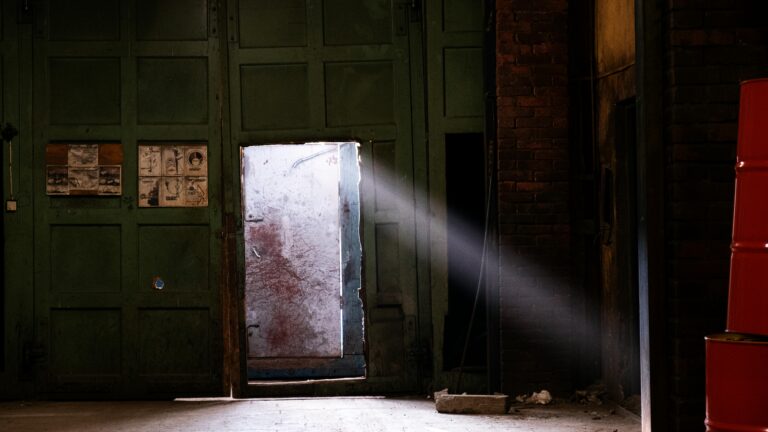
But what if your garden is graced with more shadows than sunlight? Fear not, for the versatile sedum does not discriminate! Some species, like Sedum shadeymuffin (okay, I made that name up, but wouldn’t it be cool?), can do quite well in partial shade. The trick is to observe natural light patterns in your garden. A thoughtful planting strategy that considers the shifting play of light and shadow throughout the day can create a serene, green oasis for your shade-tolerant sedums.
Now, if you’re dealing with particularly intense sunlight or the unavoidable scrim of incessant shade, don’t despair! Employ clever shading techniques—like adding a pergola or sheer canopy—to filter the harshest midday sun, or strategically place your potted sedum in well-lit yet protected areas. Reflective materials can also be used to brighten up darker corners, ensuring your sedum gets its fair share of light without the risk of a sunburn.
Remember, light conditions are not just about the presence or absence of sunlight; it’s also about the quality of light. By adjusting your approach to the unique needs of your sedum, adopting these tips, and responding to the cues your green companion gives, you’ll be rewarded with a lush, healthy, and resilient garden. Sunshine splendor or shaded serenity—whatever your sedum’s preference, you’ll be equipped to provide it with the best possible light conditions for growth.
Designing with Sedum: Aesthetic Considerations for Lighting
Kicking off our exploration into the realm of garden aesthetics, the question of whether sedum is sun or shade-loving is more like a riddle waiting to be solved by savvy gardeners. Let’s dive into integrating sedum into your garden while highlighting their preference for the sparkle or the shadow!
Imagine a radiant sedum bed, basking in the sun’s glow, its fleshy leaves shimmering like little gemstones. Sedum, or “stonecrop” as it’s affectionately known, often thrives in the sunny embrace of your garden. The secret, however, lies in the species. While many sedum varieties are sun worshippers, relishing six or more hours of direct sunlight, others can flourish in partial shade, unfurling their succulent leaves in a delicate dance with dappled light.
When considering sedum for your garden’s design, it’s crucial to play matchmaker with the light conditions you can offer. Take the vivacious Sedum ‘Autumn Joy’, its rosy-hued flowers a beacon of warm, late-summer sunsets; it demands center stage in the sunny spots of your green oasis. Conversely, the demure Sedum ‘Cape Blanco’, with its ghostly foliage, prefers the cool comfort of partial shade, echoing the tranquility of a shaded garden nook.
Concocting a feast for the eyes often means blending textures and hues, creating layers of contrast and harmony that please the senses. Sedum lends itself beautifully to this task. Picture a sun-kissed rockery, each stone a pedestal for varieties like ‘Angelina’, her needle-like golden leaves jutting outward in jubilation, reveling in the full sun. Now, cast your gaze to the serene shadow beneath a tree, where the plush, green cushions of Sedum spathulifolium nestle in contented seclusion.
Embedding sedum in your landscape doesn’t just cater to adult whims; it’s a playful wink to childhood enchantments. Remember those shady spots where we’d imagine fairies and gnomes at play? A cluster of shade-loving Sedum ‘Chocolate Ball’, with its rich, mocha tones, can evoke that same fantastical spirit, creating a lush backdrop for garden storytelling.
In crafting a visually arresting garden tapestry, it’s not just about sun versus shade. It’s about painting with plants, using sedum as your brushes, the garden as your canvas, and light—be it lambent or languid—as your guiding muse. But don’t take our word for it; see for yourself how sedum can transform garden landscapes in the real world.
FAQs: Expert Answers on Sedum Light Requirements
As we delve into the sun-soaked versus shadowy debate of sedum care, one truth emerges: versatility is the name of the game. Picture this—a rockery bathed in the golden glow of the afternoon sun, where sedum plants bask in Helios’s warm embrace. In this setting, sedum displays a lust for life, vividly showcasing its vibrant foliage. Yet, not far from this sun-drenched utopia, under the cool canopy of an aged oak, another sedum thrives, flaunting its hardiness as it revels in dappled shade. Such real-world examples illustrate the adaptability of this garden favorite.
Before we transition to our conclusive remarks and entertain the final, pressing queries, let’s pause and consider the implications of the diverse light landscapes sedum can call home. For those planting this succulent for the first time, a practical tip is to observe the microclimates within your garden. Sedum doesn’t demand the limelight, yet it doesn’t shrink from it either. Whether it’s a patch that catches the morning rays or a sheltered nook that offers relief from the midday ardor, sedum finds a way to flourish.
Amidst the ongoing questions about sedum’s preference, a common inquiry stands out: “Is sedum sun or shade?” The answer we’ve found is delightfully flexible—sedum’s resilience allows it to thrive in both. Keep in mind, however, that not all sedum species are created equal, and some may show a preference for one over the other. As the envoys of versatility in the plant kingdom, sedums cater to gardeners who possess spaces touched by both sun and shadow.
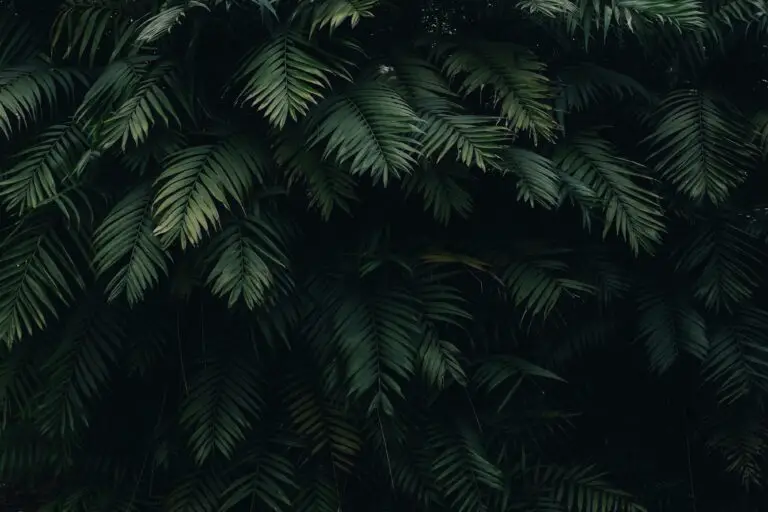
Let’s look forward with eager anticipation to the final round of FAQs, where we aim to shine a light on any remaining shadows of doubt about sedum’s light preferences. As you contemplate adding sedum to your garden tableau, remember that these hardy succulents are like the versatile actors of the botanical stage, capable of playing both lead and supporting roles in the garden drama that is light exposure.


